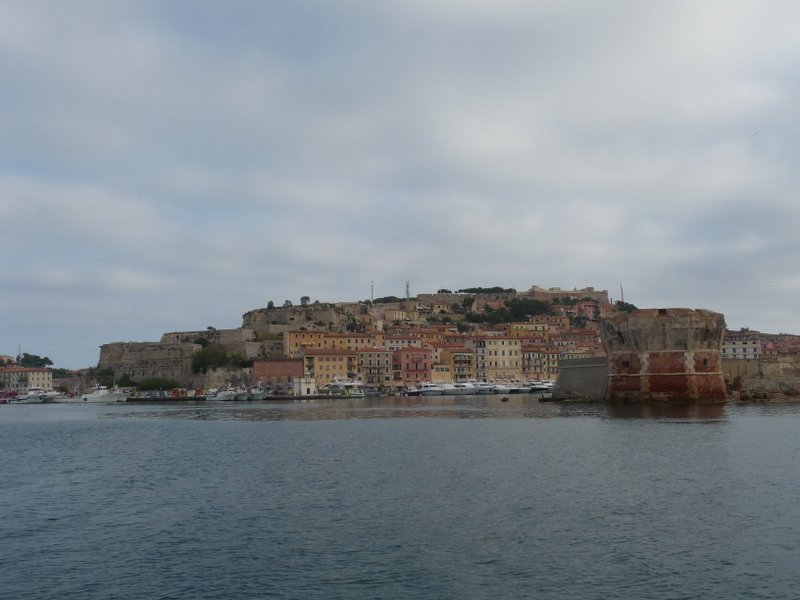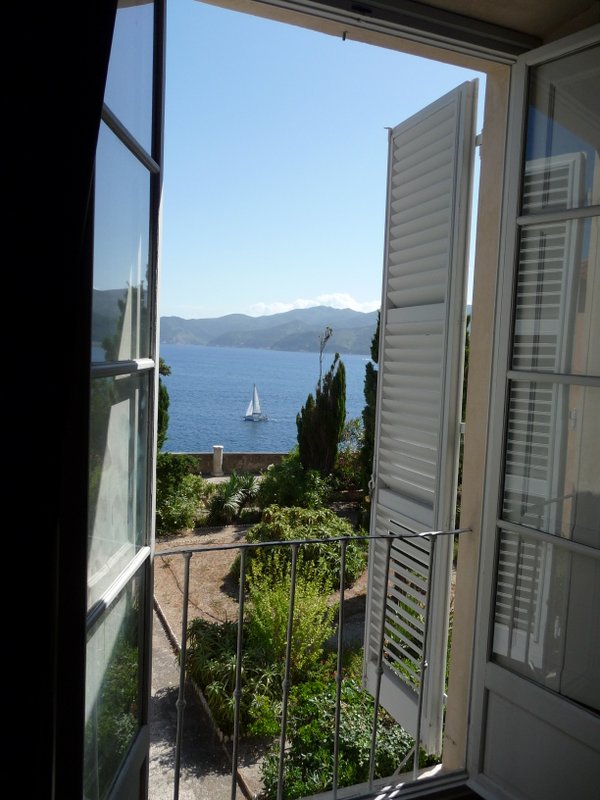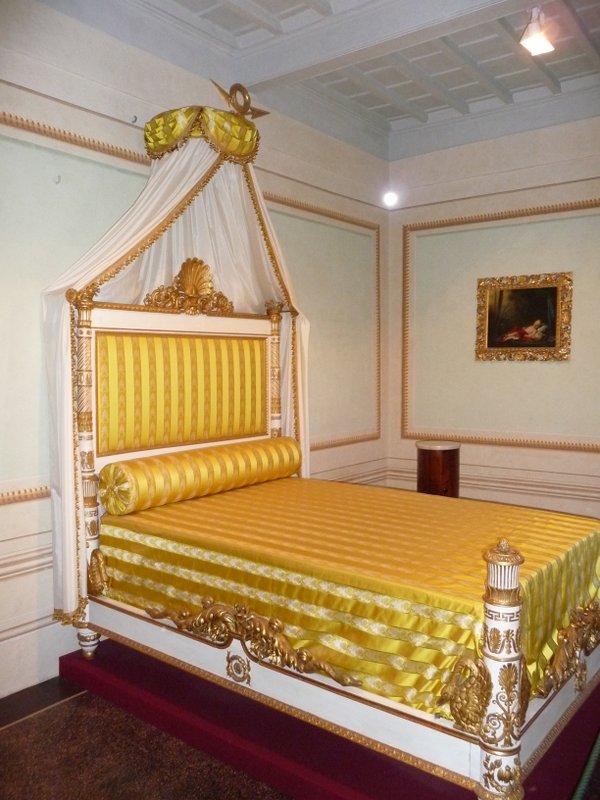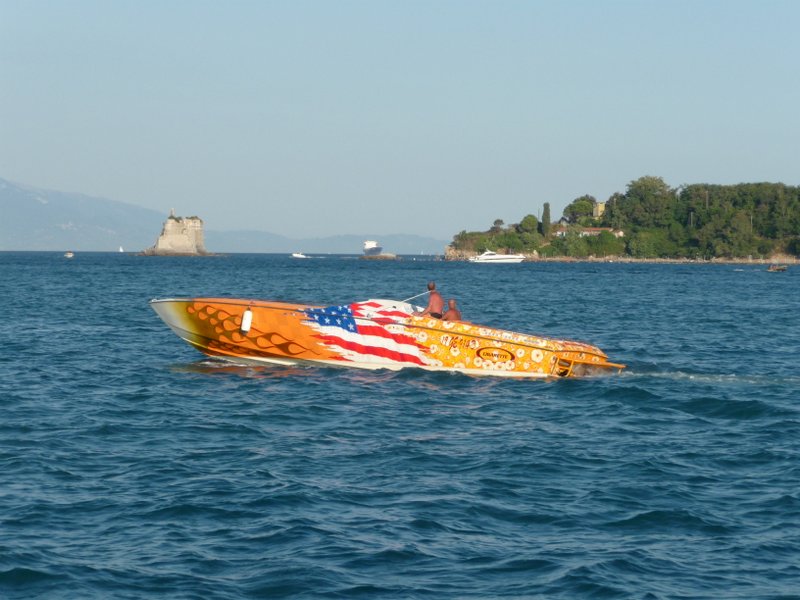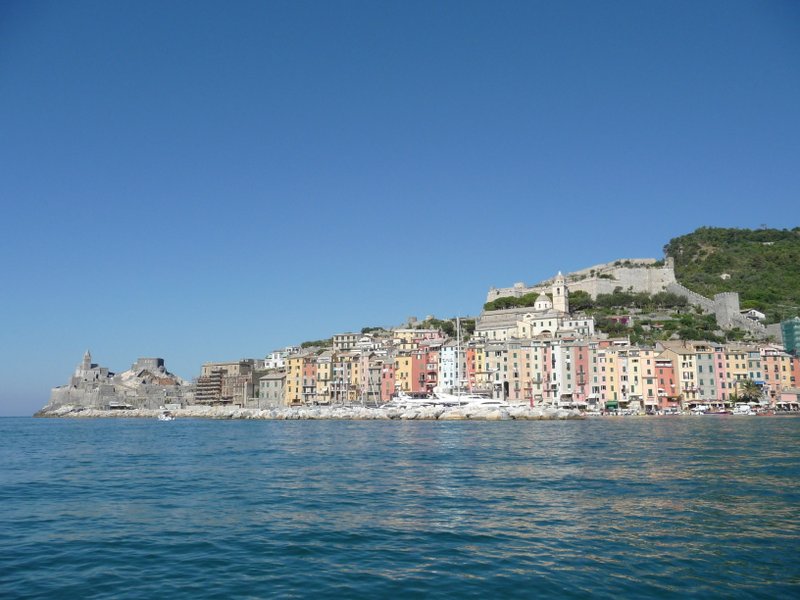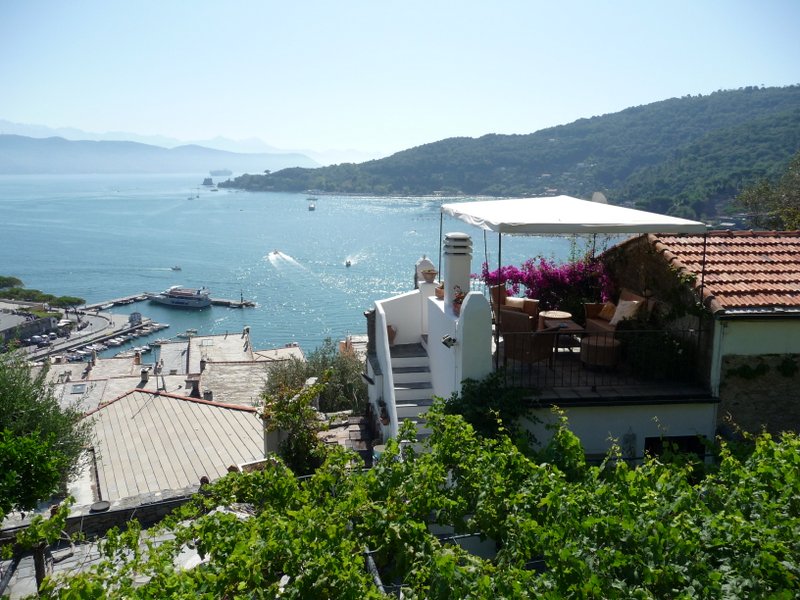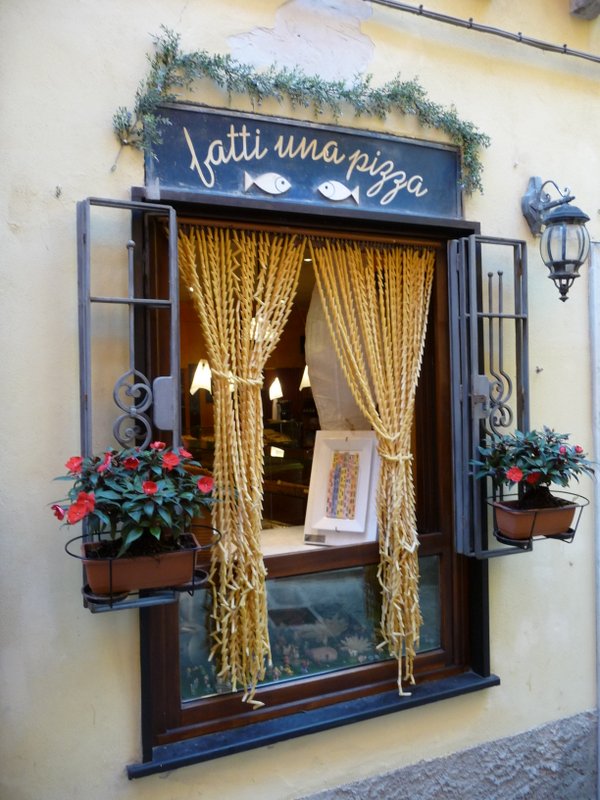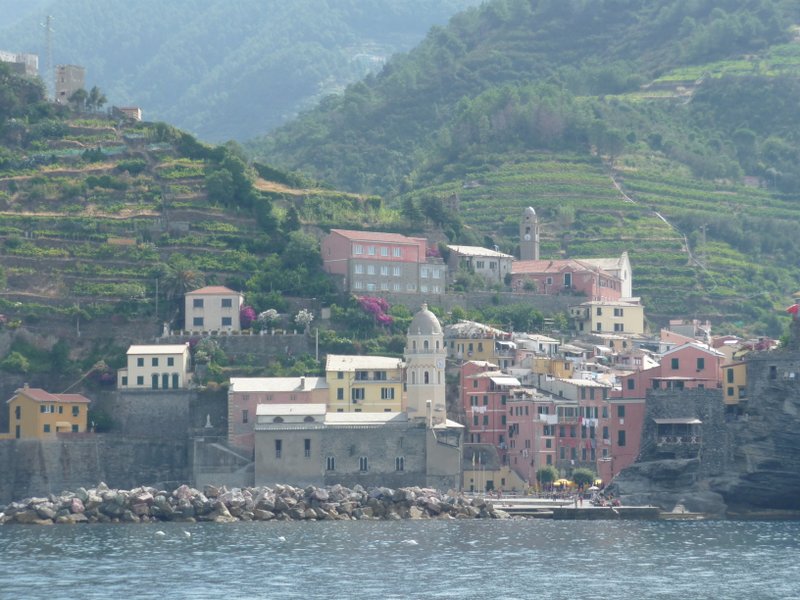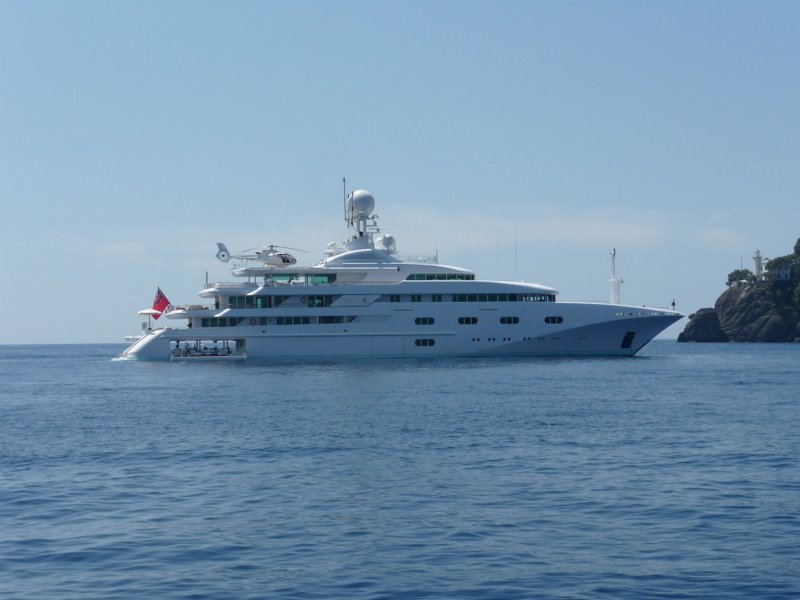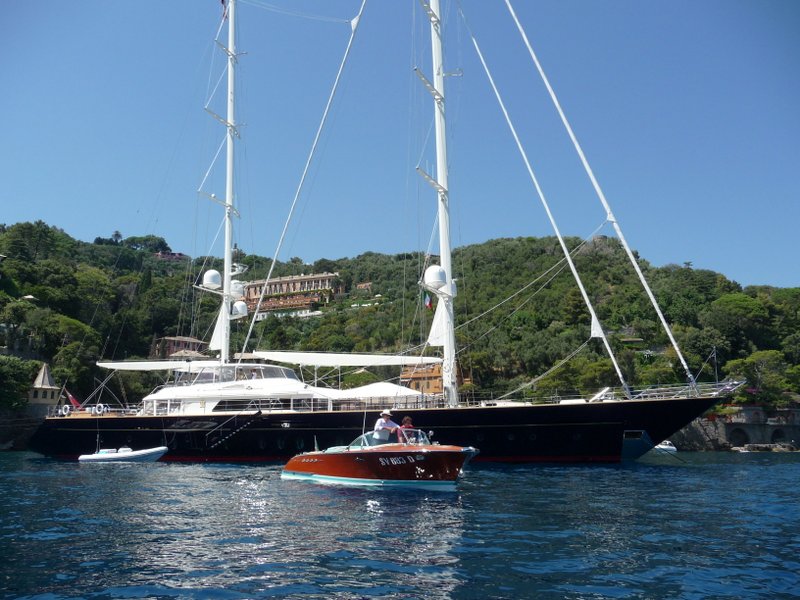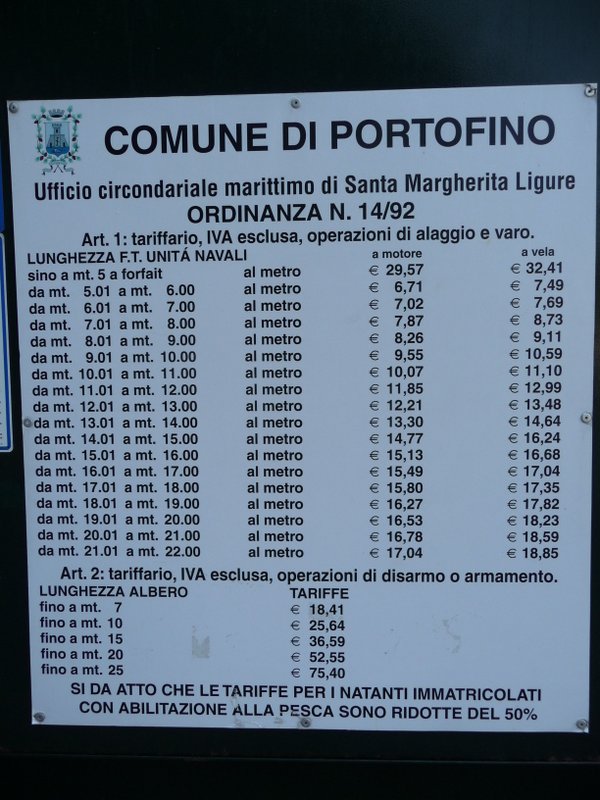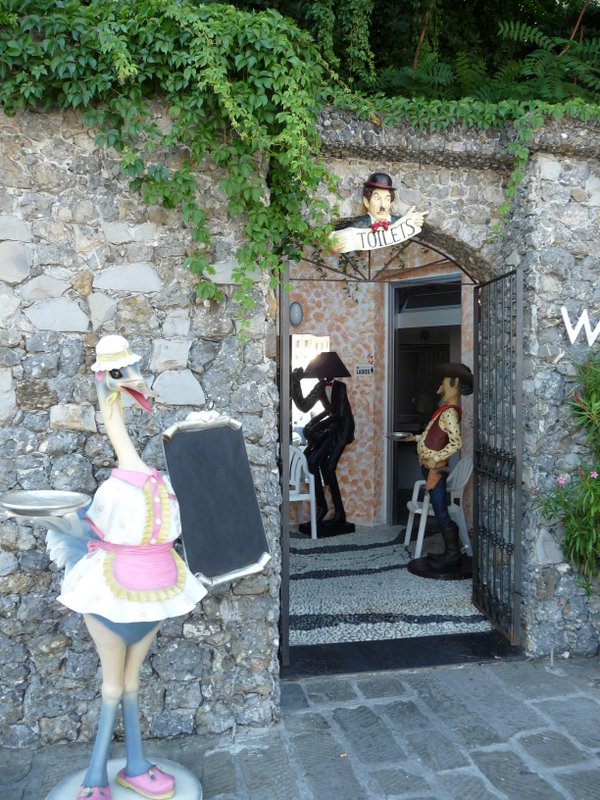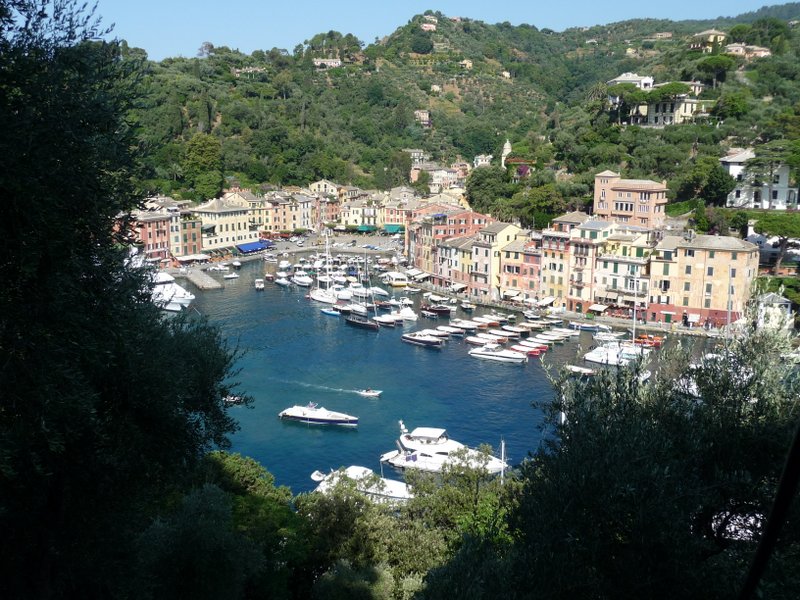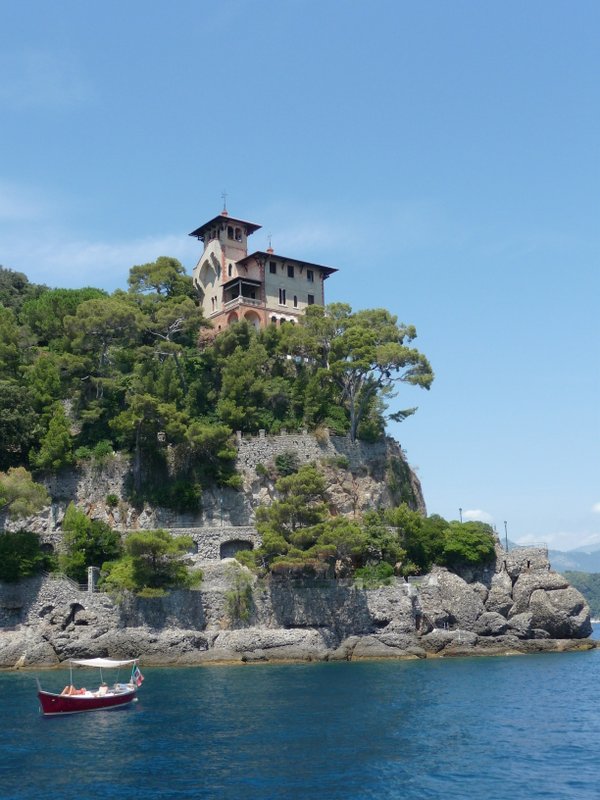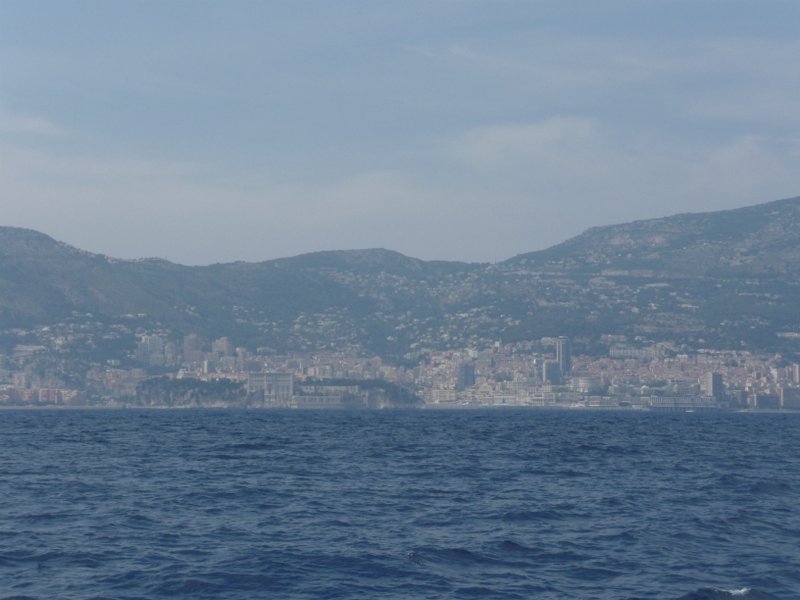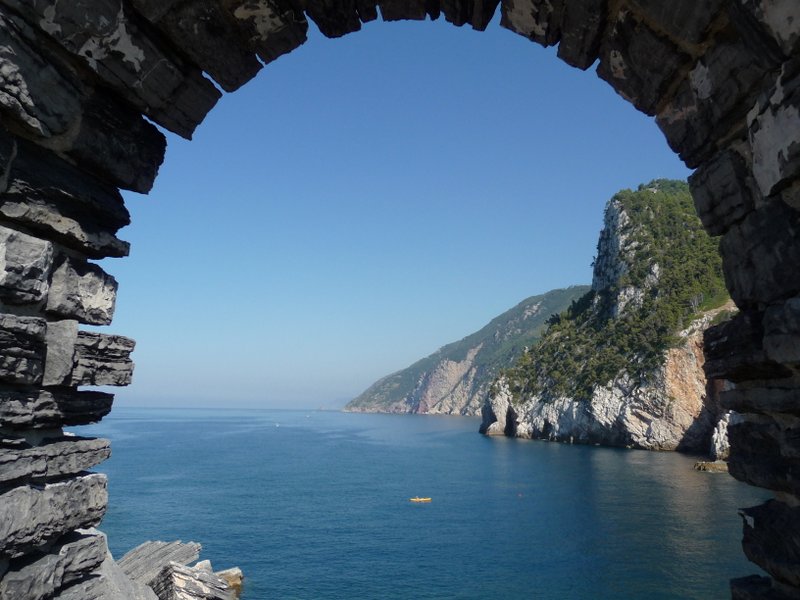 A view out over Byron’s Grotto and up the Ligurian Coast.
A view out over Byron’s Grotto and up the Ligurian Coast.
The mainland coast of Italy lying along the northern part of the Tyrhennian Sea offers the cruising sailor almost no real protected anchorages. Anyone wishing to visit Rome must choose between an expensive marina or a dodgy tie-up in a working boat yard. Having been to Rome in past years, we gave Rome a wide berth to starboard and carried on northward to the Tuscan Islands.
For most people, Tuscany conjures up images of rolling country hills dotted with villas and land-locked towns like Siena and Florence basking in the summer sun. For the cruising sailor, The Tuscan Islands are their maritime counterpart, offering excellent cruising grounds, numerous protected anchorages, Tuscan cuisine and plenty to see and do. All of this is situated just a few miles off the shores of mainland Italy and the French Island of Corsica.
We made a long day trip, motorsailing in light breezes and calm seas from the town of Anzio past the cloud of smog covering the city of Rome. Passing Rome we had officially made the transition from the south to the north of Italy, and were looking forward the subtle differences in the food, wine and culture between the two. We anchored in a large protected bight on the small, low-lying island of Giannutra, the southernmost of the Tuscans. The bottom is steep to, so anchoring is in deep (20+ meters) water and very close to the shore. Weed on the bottom added an element of uncertainty to our anchor’s ability to hold fast to the bottom. We were fortunate that the weather remained calm for the evening so Moonshadow stayed put and just did a few circles around her anchor chain in the gentle shifty breezes during the night.
The following morning we carried on to the island of Elba. Encouraged by a nice breeze from the west, we set the sails and cut the engine shortly after departing Gianunutra. Within a few minutes the wind, probably a bit of leftover land breeze, was down below 5 knots and we were motorsailing again. Along the way to our port side we could clearly see the Island of Montecristo, which was the ominous setting of Alexander Dumas’ classic novel The Count of Montecristo. The island is a National Park and is unfortunately off limits to navigation and anchoring, and reportedly infested with adders.
A couple hours later to starboard we left the promontory called Punta Ala. Anyone who has followed the past few America’s Cup regattas will recall the stylish Team Luna Rossa, sponsored by Prada’s Ernesto Bertelli that represented Yacht Club Punta Ala. Team Luna Rossa won the Louis Vuitton Cup series which allowed them to challenge Team New Zealand in America’s Cup 2000. If the Italians were second place finishers in their bid for the holy grail of yacht racing, they were certainly successful in stealing the hearts of many lovely young Auckland racer-chasers when they were in town.
We anchored in the huge and well-protected bay near the island’s main town of Portoferraio. The town takes its name from the days when it was the loading port for iron (ferro in Italian) that was mined on the island. It is also the place where Napoleon was exiled in 1814 after he abdicated as Emperor of France.
The waterfront in Portoferraio was bustling with tourists dining in its restaurants, perusing the shops and gawking at the megayachts lined up along the quay. A block or two off the waterfront things were a bit more quiet and quaint, and much more to our liking. We explored the historic old town for a few hours and made a few enquiries where we might get one of our LPG (cooking gas) cylinders refilled. The answer was invariably the same: “A few kilometers out of town in the Industrial Estate.” We did find an excellent Coop Supermarket close to the water’s edge near the Esaom Cesa Marina and Boatworks where we would return later with the dinghy and do a major provisioning.
The harbour, Portoferraio
A quick web search revealed that an outfit called LampoGas was the LPG supplier in town. Merima rang up the company and the gentleman she spoke to kindly offered to come out and meet us at a nearby marina and look at our cylinder. We met him on the dock and after inspecting our cylinder he informed us that nobody fills this type of cylinder in Italy anymore. After more conversation he became concerned that we would not have any gas to prepare meals. Given the value Italians place on their food he apparently could not bear to think of this. He mentioned that even though Italy has its fair share of problems, one thing they are proud of is their food. More conversation ensued and he then said that maybe there was something he might be able to do. By the time he left he assured us that he would be able to put at least some gas into the cylinder for us. Off he went with our cylinder resting between his legs on the floor of his Vespa motor scooter. We met him again on the dock the next day and to our delight, our tank was full. We celebrated by having dinner out in town and not using any of our precious cooking gas.
We spent a few days chilling in Portoferraio while sitting out a strong southwesterly blow. Returning to town for some more exploring, we took a tour of Napoleon’s lovely hilltop villa overlooking the town to the south and the Ligurian Sea to the north. He had pretty nice digs and we’re not quite sure why he left this exile in less than a year.
The view from the ballroom of Napoleon’s villa
Napoleon slept here
Heading north again and back to mainland Italy we could see an imposing dark-colored mountain range plunging into the sea. Some of the mountain sides had been disfigured and were scarred large white patches. From the chart we worked out that we were abeam the Port of Carrara, near the famous Carrara marble quarries. Carrara is considered to be the finest sculpturing marble in the world and was Michelangelo’s medium of choice. He toiled long and hard to bring massive blocks of it down from the mountains so that he could shape them into timeless masterpieces.
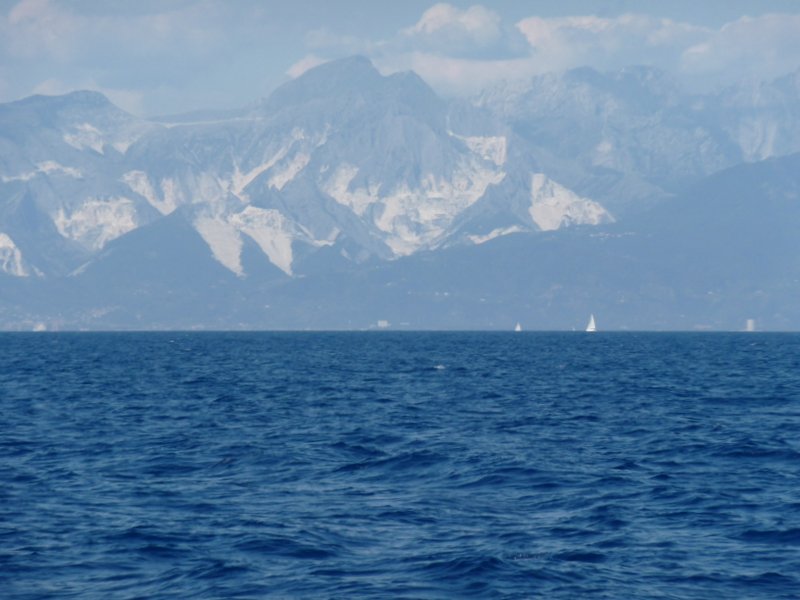 The marble quarries of Carrara
The marble quarries of Carrara
A few miles further north we found an excellent anchorage in the Bay of Portovenere, a small lobe of the Gulf of La Spezia (a.k.a. the Gulf of Poets). During the day, there was a flurry of boats passing by on their way to and from the busy port of La Spezia, but at night it all went quiet and we were able to get a good night’s sleep.
Italian men love speedboats and Speedos. This classic Donzi Cigarette boat was spotted in Portovenere.
The walled hillside town of Portovenere was one of the most picturesque that we have visited in Itlay. The row of pastel-colored old homes along the waterfront are all from seven to nine stories high, but barely wide enough for one small room on each floor. Behind the waterfront, the town ambles up the steep hillside to a castle overlooking over the area.
The waterfront homes of Portovenere
A home with some nice outdoor living, Portovenere
We spent the next morning exploring the narrow streets and steep stairways lined with quaint homes, delightful shops and restaurants. From the promontory on the west end of town we could look down at Byron’s Grotto (named after the poet Lord Byron) and up the beautiful stretch of coastline that is a World Heritage Site known as Cinque Terre. This is also the beginning of the coast that the Italians referred to when they coined the word “Riviera.” On a beautiful clear day with calm seas, as it was for us, this area is absolutely sublime.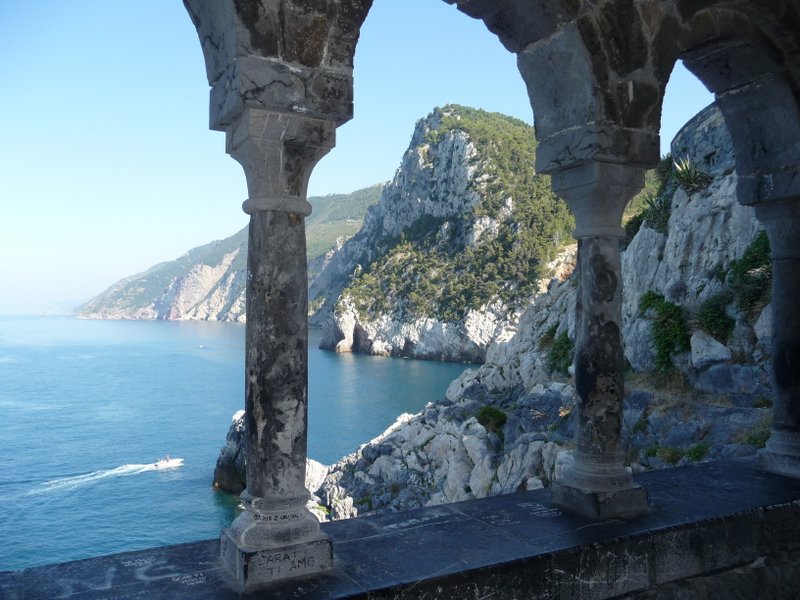
Looking down to Byron’s Grotto, Portovenere
Pasta is a very versatile food. Here in Portovenere is used as a curtain.
Taking advantage of the calm and pleasant weather, we spent a few hours in the afternoon giving Moonshadow a much needed bubble bath.
With the weather still calm and clear, we made an early departure the next morning and took a slow cruise along the stunning coastline past the five villages of Cinque Terre: Riomaggiore, Manarola, Corniglia, Vernazza and Monterosso. The small villages consist of clusters of pastel colored houses clinging to the steep hillside that has been terraced for cultivation. Until fairly recently, the villages were only accessible by sea or by foot, keeping the villages somewhat isolated from the outside world. Villagers survived on fish from the sea and crops they grew. The Cinque Terre is now a UNESCO World Heritage listed site and the villages are connected by a rail line that runs through tunnels along the coast, popping out occasionally near the villages.
The village of Vernazza, Cinque Terre
The steep coastline of the Cinque Terre ends in the Golfo del Tigullio, where we had set our course to a small, but excellent natural harbor called Portofino. The postcard-perfect town and its beautiful surroundings was discovered in the 1950’s and 60’s by authors and poets and soon became a playground/getaway for the rich and famous. Judging by the hefty fleet of mega and giga yachts swinging on their hooks in the deep water anchorage outside the tiny port, not much has changed. Portofino is so small that there is only room for a dozen or so visiting yachts to tie up to the quay and fixed moorings. The rest of the space is taken up by local boats moored closely fore and aft. We found a good anchorage in a pleasantly uncrowded bight less than a mile to the north.
One of many exquisite gigayachts anchored that day in Portofino. On board choppers are quite common but we really liked the portico aft for al-fresco waterfront lounging, dining or megayacht watching
Two iconic Italian classics gracing Portofino. A Riva runabout and a Perini Navi megayacht
After lunch we went into town to have a look around and have an espresso at one of the water front cafes. At €10 for two short espressos, the tab was about five times what we had become accostomed to paying in Italy. Just for grins, we enquired at the Portofino Yacht Club about tying up to the town quay for a night. We fully expected that it was going to be expensive, but were absolutely blown away by the price tag of €1500. One hour in Portofino would buy us four full days back home! By comparison, a fixed mooring would have been bargain for us at only €420 (plus tax) per night which includes the additional charge of €75 for the mast! We guessed that the Italians reckon with all the money sailboats save on fuel, they can afford to pay more for mooring than power boats. If Portofino is outrageously expensive it is still one of the special places on the planet and delightful as ever.
The pricelist for fixed moorings in Portofino. In the bottom part, Albero means mast.
Perhaps part of the exorbitant mooring fees go to support Portofino’s excellent outdoor arts program
The next morning was beautiful and clear so we headed into town early. For a couple hours we had Portofino nearly to ourselves as all the tripper boats from Santa Margherita and tenders from the cruise ships had yet to arrive and release their herds of tourists. We wandered around the town and along some of the shady paths meandering around the surrounding hillside. On the spit of land heading out to the lighthouse we found ourselves amongst some spectacular villas with priceless views of the port and the sea.
We returned that evening for an excellent dinner in town at a quaint outdoor café near the piazza. The day trippers were gone and most of those remaining were lodging in expensive hotels or villas or on mega yachts, so the people-watching was exceptional.
Morning in Portofino
A lovely villa near Portofino
The next day we departed Portofino, heading across the Gulf of Genova to the town of Alassio. We anchored off the town in the large open bay where it was reasonably calm until a southerly swell came rolling in, waking us early in the morning.
We had planned to anchor near Monte Carlo the following day, but with the swell, the only comfortable place to park Moonshadow would have been in an expensive marina, jammed between two “high rise” mega yachts. We carried on a few miles further west across the border into France and found better protection from the swell in the large and lovely bay of Villefranche.
This is about as close as we could afford to get to Monaco.

